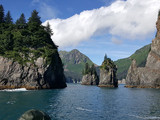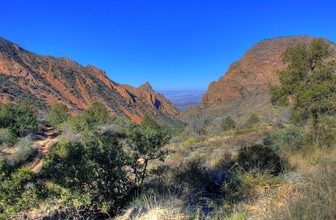Government Grants
Business Grants
Home Owner Programs
Federal Programs
About Us
IMRO-Japanese American Confinement Sites Grant Program
Use and Use Restriction:
Japanese American Confinement Sites grant funds may be used for identifying, researching, evaluating, interpreting, protecting, restoring, repairing, and acquiring historic confinement sites where Japanese Americans were detained during World War II.
The grant program is authorized by the Preservation of Japanese American Confinement Sites Act of 2006 (Public Law 109-441, 120 STAT 3288, 16 USC 461).
These historic confinement sites are defined as the ten War Relocation Authority internment camps (Gila River, Granada, Heart Mountain, Jerome, Manzanar, Minidoka, Poston, Rohwer, Topaz, and Tule Lake), as well as other historically significant locations, as determined by the Secretary of the Interior, where Japanese Americans were detained during World War II.
These sites are specifically identified in "Confinement and Ethnicity:
An Overview of World War II Japanese American Relocation Sites", published by the Department of the Interior, National Park Service, Western Archeological and Conservation Center, in 199 9. Public Laws 109-441 and 111-88 prohibit land acquisition at sites other than:
Heart Mountain (WY), Honouliuli (HI), Jerome (AR), Rohwer (AR), and Topaz (UT). ~~~~Match requirement:
Each grant requires a 2:1 Federal to non-Federal match; that is, to receive two dollars of Federal funds at least a one dollar non-Federal match is required.
The match may be composed of cash or in-kind contributions.
The non-Federal match may be raised and spent during the grant period; it does not have to be in the bank at the time of the application.
~~~~~Projects must benefit one or more historic Japanese American confinement sites.
Project categories include:
Capital projects- including construction of new interpretive centers, restrooms, and interpretive trails.
Documentation- including identification, research, and evaluation of historic confinement sites; projects may include archeological surveys, National Register of Historic Places nominations, and National Historic Landmark nominations.
Oral history interviews- including recording, transcribing, digitally processing and sharing the interviews.
Interpretation and education related to historic confinement sites- projects may include wayside exhibits, creative arts and educational curricula.
Preservation of confinement sites and related historic resources- projects may include stabilization, rehabilitation, restoration, acquisition, relocation of historic buildings and structures to their original locations, reconstruction of key structures, and collections conservation.
Planning projects- such as interpretive plans for new exhibits and programs, land use plans, and resource management plans.
Non-Federal real property acquisition- allowed only with the owners written permission at only Heart Mountain, Honouliuli, Jerome, Rohwer, and Topaz per stipulations of Public Laws 109-441 and 111-8 8. ~~~~~NOTE:
Please visit the Japanese American Confinement Sites Grant Program Website at http://www.nps.gov/history/hps/HPG/JACS/index.html for the complete application process and grant guidelines, before submitting applications.
The website includes the application, mandatory forms, instructions and guidelines available for downloading at no cost.
DO NOT SUBMIT AN ELECTRONIC APPLICATION.
Grant application packages must be submitted in hard copy to:
(For Postal Service Delivery) National Park Service, ATTN:
Kara Miyagishima, P.O.
Box 25287, Denver, CO 80225-028 7. (For Express Delivery) National Park Service, ATTN:
Kara Miyagishima, 12795 West Alameda Pkwy., Lakewood, CO 80228-283 8. Applications must be RECEIVED (not postmarked) by Tuesday, November 19, 201 3. Please note:
Due to the government shutdown, the application deadline for the FY2014 Japanese American Confinement Sites grant applications has been extended to November 19, 2013 and this announcement was amended to reflect the change.
A complete application packages consists of:
A completed FY2014 Project Proposal SF 424 Application for Federal Assistance DI 2010 Certifications Regarding Debarment, Suspension and Other Responsibility Matters, Drug-Free Workplace Requirements and Lobbying.
Non-Construction Project:
SF 424A Budget Information, Non-Construction Programs SF 424B Assurances, Non-Construction Programs.
Construction Projects:
SF 424C Budget Information, Construction Programs SF 424D Assurances, Construction Programs. ~~~~Award Procedure- Eligible applications and accompanying documentation will be reviewed by the Japanese American Confinement Sites Grants Selection Panel, a panel of Federal agency experts representing applicable preservation, history, education, and conservation disciplines.
The panel will provide recommendations to the Secretary of the Interior for final project selection.
The panels recommendations will be approved by the Secretary of the Interior through an apportionment process.
Grants will be awarded by NPS directly to selected grantees.
The NPS and grant recipient will sign a grant agreement.
See the Japanese American Confinement Sites Grant Program Guidelines for more information.
Japanese American Confinement Sites grant funds may be used for identifying, researching, evaluating, interpreting, protecting, restoring, repairing, and acquiring historic confinement sites where Japanese Americans were detained during World War II.
The grant program is authorized by the Preservation of Japanese American Confinement Sites Act of 2006 (Public Law 109-441, 120 STAT 3288, 16 USC 461).
These historic confinement sites are defined as the ten War Relocation Authority internment camps (Gila River, Granada, Heart Mountain, Jerome, Manzanar, Minidoka, Poston, Rohwer, Topaz, and Tule Lake), as well as other historically significant locations, as determined by the Secretary of the Interior, where Japanese Americans were detained during World War II.
These sites are specifically identified in "Confinement and Ethnicity:
An Overview of World War II Japanese American Relocation Sites", published by the Department of the Interior, National Park Service, Western Archeological and Conservation Center, in 199 9. Public Laws 109-441 and 111-88 prohibit land acquisition at sites other than:
Heart Mountain (WY), Honouliuli (HI), Jerome (AR), Rohwer (AR), and Topaz (UT). ~~~~Match requirement:
Each grant requires a 2:1 Federal to non-Federal match; that is, to receive two dollars of Federal funds at least a one dollar non-Federal match is required.
The match may be composed of cash or in-kind contributions.
The non-Federal match may be raised and spent during the grant period; it does not have to be in the bank at the time of the application.
~~~~~Projects must benefit one or more historic Japanese American confinement sites.
Project categories include:
Capital projects- including construction of new interpretive centers, restrooms, and interpretive trails.
Documentation- including identification, research, and evaluation of historic confinement sites; projects may include archeological surveys, National Register of Historic Places nominations, and National Historic Landmark nominations.
Oral history interviews- including recording, transcribing, digitally processing and sharing the interviews.
Interpretation and education related to historic confinement sites- projects may include wayside exhibits, creative arts and educational curricula.
Preservation of confinement sites and related historic resources- projects may include stabilization, rehabilitation, restoration, acquisition, relocation of historic buildings and structures to their original locations, reconstruction of key structures, and collections conservation.
Planning projects- such as interpretive plans for new exhibits and programs, land use plans, and resource management plans.
Non-Federal real property acquisition- allowed only with the owners written permission at only Heart Mountain, Honouliuli, Jerome, Rohwer, and Topaz per stipulations of Public Laws 109-441 and 111-8 8. ~~~~~NOTE:
Please visit the Japanese American Confinement Sites Grant Program Website at http://www.nps.gov/history/hps/HPG/JACS/index.html for the complete application process and grant guidelines, before submitting applications.
The website includes the application, mandatory forms, instructions and guidelines available for downloading at no cost.
DO NOT SUBMIT AN ELECTRONIC APPLICATION.
Grant application packages must be submitted in hard copy to:
(For Postal Service Delivery) National Park Service, ATTN:
Kara Miyagishima, P.O.
Box 25287, Denver, CO 80225-028 7. (For Express Delivery) National Park Service, ATTN:
Kara Miyagishima, 12795 West Alameda Pkwy., Lakewood, CO 80228-283 8. Applications must be RECEIVED (not postmarked) by Tuesday, November 19, 201 3. Please note:
Due to the government shutdown, the application deadline for the FY2014 Japanese American Confinement Sites grant applications has been extended to November 19, 2013 and this announcement was amended to reflect the change.
A complete application packages consists of:
A completed FY2014 Project Proposal SF 424 Application for Federal Assistance DI 2010 Certifications Regarding Debarment, Suspension and Other Responsibility Matters, Drug-Free Workplace Requirements and Lobbying.
Non-Construction Project:
SF 424A Budget Information, Non-Construction Programs SF 424B Assurances, Non-Construction Programs.
Construction Projects:
SF 424C Budget Information, Construction Programs SF 424D Assurances, Construction Programs. ~~~~Award Procedure- Eligible applications and accompanying documentation will be reviewed by the Japanese American Confinement Sites Grants Selection Panel, a panel of Federal agency experts representing applicable preservation, history, education, and conservation disciplines.
The panel will provide recommendations to the Secretary of the Interior for final project selection.
The panels recommendations will be approved by the Secretary of the Interior through an apportionment process.
Grants will be awarded by NPS directly to selected grantees.
The NPS and grant recipient will sign a grant agreement.
See the Japanese American Confinement Sites Grant Program Guidelines for more information.
Relevant Nonprofit Program Categories
Obtain Full Opportunity Text:
Japanese American Confinement Sites Grant Program website
Additional Information of Eligibility:
Eligible applicants are organizations and entities working to preserve historic Japanese American confinement sites and their history, including: private, public and quasi-public nonprofit institutions/organizations; educational institutions; state, local, and Federally recognized Indian Tribal governments; and other public institutions/organizations.
Individuals may not apply.
These historic confinement sites are defined as the ten War Relocation Authority internment camps (Gila River, Granada, Heart Mountain, Jerome, Manzanar, Minidoka, Poston, Rohwer, Topaz, and Tule Lake), as well as other historically significant locations, as determined by the Secretary of the Interior, where Japanese Americans were detained during World War II.
These sites are specifically identified in "Confinement and Ethnicity: An Overview of World War II Japanese American Relocation Sites", published by the Department of the Interior, National Park Service, Western Archeological and Conservation Center, in 1999.
Public Laws 109-441 and 111-88 prohibit land acquisition at sites other than: Heart Mountain (WY), Honouliuli (HI), Jerome (AR), Rohwer (AR), and Topaz (UT).
Full Opportunity Web Address:
http://www.nps.gov/history/hps/HPG/JACS/index.html
Contact:
Kara MiyagishimaProgram ManagerPhone 303-969-2885
Agency Email Description:
contact me for information
Agency Email:
Kara_Miyagishima@nps.gov
Date Posted:
2013-08-30
Application Due Date:
2013-11-19
Archive Date:
2013-12-01
Social Entrepreneurship
Spotlight
Exeter Sees Growth in Social Enterprise Sector

A partner at The Fruit Tree for Business LLP and co-founder of ESSENCE, Lorna Turner, discusses why Social Enterprise Day is a good time to celebrate Exeter’s thriving social enterprise scene.





